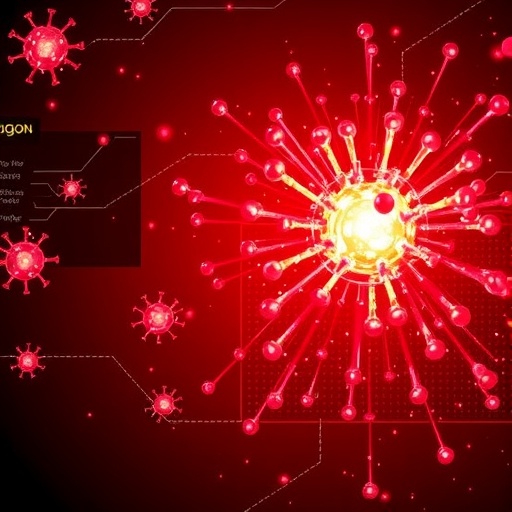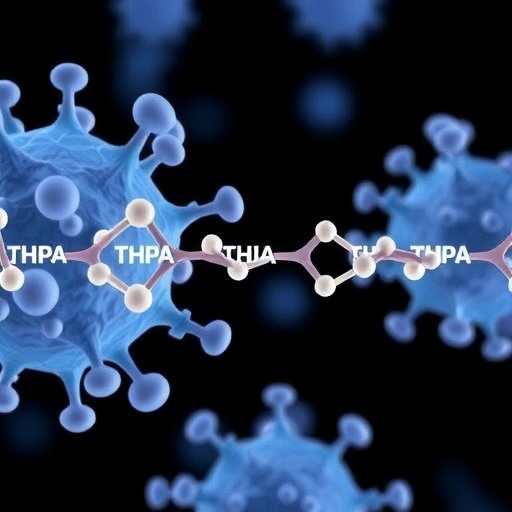In the ever-evolving landscape of neuroscience, dopamine remains a chemical of profound intrigue, often cast as the maestro behind motivation, reward, and movement. Historically, the fluctuations of dopamine within the brain have been closely associated with directing the vigor or intensity of actions. However, a groundbreaking study published in Nature Neuroscience by Liu, Melani, Maltese, and colleagues challenges this long-held assumption, revealing that the rapid, subsecond changes in dopamine do not directly dictate how energetically actions unfold.
For decades, dopamine has been celebrated for its critical role in the regulation of motor function and reinforcement learning. The traditional viewpoint has often linked dopamine’s phasic releases to invigorating ongoing behaviors, essentially acting as a signal for how vigorously an action should be executed. This perspective draws from decades of behavioral neuroscience and pharmacological data indicating that dopamine depletion or dysregulation can lead to diminished movement vigor, as famously observed in Parkinson’s disease.
Yet, this new research pivots from this narrative by employing cutting-edge recording techniques to capture the nuanced temporal profile of dopamine signals with unprecedented resolution. The study focused on dissecting subsecond dopamine dynamics—those fleeting bursts and dips that occur on a millisecond scale—while subjects engaged in goal-directed actions involving varying movement speeds and effort levels. The investigators used fast-scan cyclic voltammetry combined with advanced behavioral tracking to correlate dopamine fluctuations with real-time action metrics.
Remarkably, their findings demonstrated that these rapid dopamine transients, although intricately linked to the initiation and prediction of reward, do not correlate with the measured vigor or forcefulness of the ongoing behavior. That is to say, while dopamine bursts herald important environmental cues and action outcomes, they do not act as direct tags for how energetically a movement is performed. This dispels a fundamental dogma in the field—that dopamine signals act as a real-time invigoration code guiding the intensity of motor output.
Delving deeper, the researchers identified that tonic levels of dopamine—the slower, background concentrations—may play a more pivotal role in modulating general motivational states and motor readiness, rather than the phasic bursts dictating immediate vigor. This differentiation between tonic and phasic dopamine signaling adds a critical layer of complexity to our understanding, underscoring how discrete dimensions of dopamine neurotransmission contribute differently to behavior.
The implications of these results ripple across multiple domains. For one, models of reinforcement learning and decision-making within the basal ganglia, a brain region deeply imbued with dopaminergic input, will need significant refinement. The existing frameworks often implicate dopamine fluctuations as the principal driver of not only reward prediction but also the energy invested in executing actions. This study urges a reconsideration of such models to decouple vigor from subsecond dopamine signals.
Additionally, this finding breathes new life into therapeutic strategies targeting dopamine in motor disorders. Conditions like Parkinson’s disease, Huntington’s disease, and even motivational deficits in depression have traditionally hinged on the assumption that enhancing dopamine release would directly augment motor vigor and motivation. With this new evidence, therapies might increasingly focus on regulating the tonic dopamine milieu or alternative neuromodulatory systems to better restore functional engagement in patients.
Technically, the study leveraged the exquisite temporal fidelity of fast-scan cyclic voltammetry, allowing measurements of dopamine on a scale of milliseconds, paired with an innovative analytical framework that differentiated the influence of phasic and tonic dopamine on behavior. This multifaceted approach permitted the isolation of dopamine signals from confounding motor variables, thus delivering a more granular view of their specific functional contributions.
Moreover, the study’s behavioral paradigms were meticulously designed to dissect movement vigor from reward expectation and learning. Subjects performed tasks requiring varying degrees of effort and speed, under conditions that manipulated motivational states and reward contingencies independently. This design fortified the evidence that the dissociation observed between dopamine signals and vigor was not an artifact but reflected genuine neurobiological specificity.
One of the striking revelations of this work is that dopamine’s role seems more tightly coupled with encoding information about rewards and environmental contingencies rather than serving as the immediate motor energizer. This repositions dopamine as a nuanced informational signal critical for learning and adaptive behavior, while other neural circuits and neuromodulatory systems may govern the dynamism and forcefulness of movement execution.
Furthermore, this research invites inquiry into what mechanisms then regulate movement vigor if not subsecond dopamine fluctuations. The authors speculate that other neurotransmitters, such as norepinephrine or acetylcholine, and the intrinsic dynamics of motor cortical and spinal networks, may serve as the primary controllers of vigor. Future investigations will no doubt aim to unravel these contributions and how they interplay with dopaminergic signals.
In essence, this study heralds a paradigm shift in neuroscience, urging the community to revise long-standing views of dopamine’s role in action control. It bridges key gaps between neurochemical signaling and behavioral output, highlighting the remarkable specificity and modularity of brain function. While dopamine remains indispensable for motivation and reward, the real-time invigoration of action emerges as a distinct neural endeavor.
By disentangling these complex roles, Liu and colleagues propel the field forward, laying the groundwork for more targeted research and refined therapeutic approaches. The clarity achieved regarding dopamine’s specific contributions enriches our foundational understanding of brain chemistry and movement, with broad-reaching repercussions for neurobiology, psychology, and clinical science.
As the neuroscience community digests these findings, it’s clear that dopamine neurotransmission is far more sophisticated than a simplistic motor accelerator. Understanding the multifaceted layers of dopamine will continue to be a central quest, and this study represents a landmark in that journey—illuminating the subtle but critical separation between motivational coding and motor vigor.
In conclusion, this research underscores how the brain employs a palette of finely tuned chemical signals to orchestrate behavior. Dopamine’s phasic fluctuations, once considered the prime driver of movement vigor, instead embody a more intricate role in signaling salient environmental information and reward prediction. This nuanced perspective reshapes our grasp of neural control and opens new avenues to explore the enigmatic orchestration of human action.
Subject of Research: Dopamine signaling in motor control and action vigor
Article Title: Subsecond dopamine fluctuations do not specify the vigor of ongoing actions
Article References:
Liu, H., Melani, R., Maltese, M. et al. Subsecond dopamine fluctuations do not specify the vigor of ongoing actions. Nat Neurosci (2025). https://doi.org/10.1038/s41593-025-02102-1
Image Credits: AI Generated
DOI: https://doi.org/10.1038/s41593-025-02102-1
Tags: behavioral neuroscience breakthroughscutting-edge neuroscience methodsdopamine and action vigordopamine dysregulation and movementdopamine signaling in goal-directed actionsdopamine’s role in motivationimplications for Parkinson’s disease researchNature Neuroscience study findingsneuroscience of motor functionrapid changes in dopamine dynamicsreinforcement learning and dopaminesubsecond dopamine fluctuations





